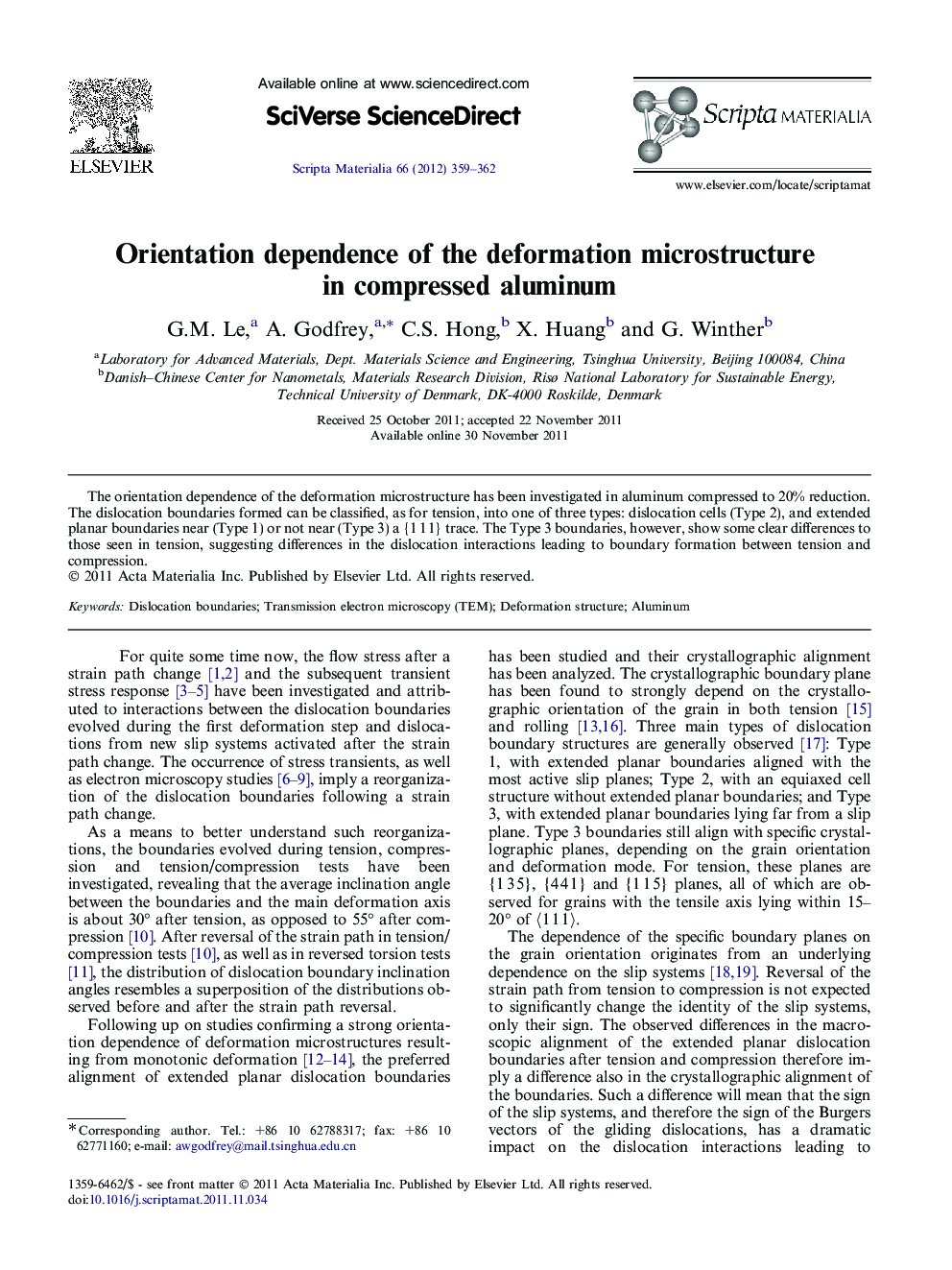| Article ID | Journal | Published Year | Pages | File Type |
|---|---|---|---|---|
| 1500025 | Scripta Materialia | 2012 | 4 Pages |
Abstract
The orientation dependence of the deformation microstructure has been investigated in aluminum compressed to 20% reduction. The dislocation boundaries formed can be classified, as for tension, into one of three types: dislocation cells (Type 2), and extended planar boundaries near (Type 1) or not near (Type 3) a {1 1 1} trace. The Type 3 boundaries, however, show some clear differences to those seen in tension, suggesting differences in the dislocation interactions leading to boundary formation between tension and compression.
Related Topics
Physical Sciences and Engineering
Materials Science
Ceramics and Composites
Authors
G.M. Le, A. Godfrey, C.S. Hong, X. Huang, G. Winther,
